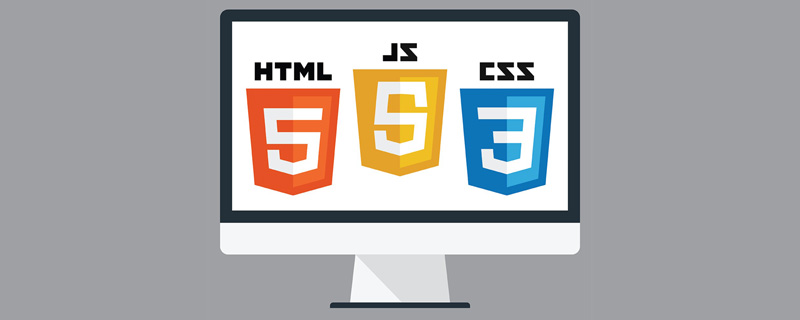 Web Front-end
Web Front-end JS Tutorial
JS Tutorial A preliminary understanding of javascript object-oriented_javascript skills
A preliminary understanding of javascript object-oriented_javascript skillsForeword
Class-based objects: We all know that an obvious sign in object-oriented languages is the concept of classes. Through classes, which are similar to templates, we can create many objects with the same properties and methods. However, there is no concept of classes in ECMAScript, so naturally it will be different from objects in class-based languages.
Objects in js: An unordered collection of attributes, which can include basic values, objects, and functions. That is, an object in js is a set of values in no specific order. Each property or method of the object has its own name, and each name corresponds to a value.
Understanding object
How to create objects
1 The simplest way to create an object is to create an Object instance and then add properties and methods to it.
For example
var person = new Object();
person.name='谦龙';
person.sex='男';
person.sayNameAndSex=function(){
console.log(this.name,this.sex)
}
person.sayNameAndSex(); // 谦龙 男
2 Use object literal form
For example
var person={
name:'谦龙',
sex:'男',
sayNameAndSex:function(){
console.log(this.name,this.sex)
}
}
person.sayNameAndSex(); // 谦龙 男
Type of attribute
ECMAScript has two types of data attributes: data attributes and accessor attributes.
Data attributes
The data attribute contains the location of a data value. Values can be read and written at this location. There are four properties that describe its behavior.
1.[[Configurable]]: Indicates whether the attribute can be redefined by deleting it through delete...The default value is true
2.[[Enumerable]]: Indicates whether the attribute can be returned through for in loop...The default is true
3.[[Writable]]: Indicates whether the value of the attribute can be modified...The default is true
4.[[Value]]: Indicates the value of this attribute. The default is undefined
To modify the default properties of a property, you must use the ES5 Object.defineProperty() method, which receives three parameters: the object where the property is located, the name of the property, and an object describing the property properties (configurable, enumerable , writable, value), setting one or more of them can modify the corresponding characteristics
DEMO
var person={};
Object.defineProperty(person,'name',{
configurable:false,//表示不允许通过delete删除属性
writable:false,//表示不允许重写
ennumerable:false,//表示不允许通过for in遍历
value:'谦龙'//设置该对象中属性的值
})
person.name='谦龙2';//尝试重新设置 结果不生效
delete person.name;//尝试删除 结果不生效
for(var attr in person){
console.log(person[attr]);// false
}
console.log(person.name);//谦龙
Note: After setting configurable to false, it is not allowed to be changed to true again. In addition, when calling the Object.defineProperty() method, the default values of configurable, ennumerable, and writable are false.
Accessor properties
Accessor properties do not contain data values. They contain a pair of getter and setter functions (but these two functions are not necessary). When reading the accessor properties, the getter function will be called. This function is responsible for returning a valid When writing the accessor property, the setter function is called and the new value is passed in. This function is responsible for how to process the data.
Accessor properties have the following characteristics
[[configurable]] indicates whether attributes can be deleted through delete to define new attributes
[[enumerable]] indicates whether the returned attributes can be traversed through a for in loop
[[get]] Function called when reading properties, the default is undefined
[[set]] The function called when writing the function. The default value is undefined
Note: Accessor properties cannot be defined directly and must be defined through Object.defineProterty()
DEMO
var book={
_year:2015, //这里的下划线是常见的记号,表示只能通过对象的方法才能访问的属性
edition:1
}
Object.defineProperty(book,'year',{
get:function(){
return this._year; //即默认通过 book.year获取值的时候 返回的是 boot._year的值
},
set: function (value) {//在对 boot.year设置值的时候 默认调用的方法 对数据进行处理
var _year=this._year;
if(value > _year){
this._year=value;
this.edition+=value-_year;
}
}
})
book.year = 2016;
console.log(book.year,book.edition); // 2016 2
Define multiple attributes
We can add multiple properties to an object through the Object.defineProperties() method in ES5. This method accepts two object parameters. The first parameter is the object whose properties are to be added and modified, and the second parameter is The attributes correspond to the attributes to be added and modified in the first object.
DEMO
var book={};
Object.defineProperties(book,{
_year:{
value:2015,
writable:true //注意这里设置成true 才可以 "写" 默认是false
},
edition:{
value:1,
writable:true //注意这里设置成true 才可以 "写" 默认是false
},
year:{
get:function(){
return this._year;
},
set: function (value) {
var _year=this._year;
if(value > _year){
this._year=value;
this.edition+=value-_year;
}
}
}
})
book.year=2016;
console.log(book.year,book.edition); // 2016 2
Read properties of object properties
Using the Object.getOwnPropertyDescriptor() method in ES5, you can get the descriptor of a given property.
This method receives two parameters: the object where the attribute is located and the attribute name of the descriptor to be read. What is returned is an object. If it is a data attribute, the returned attributes are configurable, enumerable, writable, value. If it is an accessor attribute, the returned attributes are configurable, enumerable, get, set
DEMO
var book={};
Object.defineProperties(book,{
_year:{
value:2015,
writable:true
},
edition:{
value:1,
writable:true
},
year:{
get:function(){
return this._year;
},
set: function (value) {
var _year=this._year;
if(value > _year){
this._year=value;
this.edition+=value-_year;
}
}
}
})
//对象遍历函数
function showAllProperties(obj){
for(var attr in obj){
console.log(attr+':'+obj[attr]);
}
}
var descriptor= Object.getOwnPropertyDescriptor(book,'_year');//数据属性
var descriptor2= Object.getOwnPropertyDescriptor(book,'year');//访问器属性
showAllProperties(descriptor);
console.log('============================');
showAllProperties(descriptor2);
That’s all the above introduction to the preliminary understanding of object-oriented JavaScript Pay attention.
 如何使用JS和百度地图实现地图平移功能Nov 21, 2023 am 10:00 AM
如何使用JS和百度地图实现地图平移功能Nov 21, 2023 am 10:00 AM如何使用JS和百度地图实现地图平移功能百度地图是一款广泛使用的地图服务平台,在Web开发中经常用于展示地理信息、定位等功能。本文将介绍如何使用JS和百度地图API实现地图平移功能,并提供具体的代码示例。一、准备工作使用百度地图API前,首先需要在百度地图开放平台(http://lbsyun.baidu.com/)上申请一个开发者账号,并创建一个应用。创建完成
 js字符串转数组Aug 03, 2023 pm 01:34 PM
js字符串转数组Aug 03, 2023 pm 01:34 PMjs字符串转数组的方法:1、使用“split()”方法,可以根据指定的分隔符将字符串分割成数组元素;2、使用“Array.from()”方法,可以将可迭代对象或类数组对象转换成真正的数组;3、使用for循环遍历,将每个字符依次添加到数组中;4、使用“Array.split()”方法,通过调用“Array.prototype.forEach()”将一个字符串拆分成数组的快捷方式。
 如何使用JS和百度地图实现地图多边形绘制功能Nov 21, 2023 am 10:53 AM
如何使用JS和百度地图实现地图多边形绘制功能Nov 21, 2023 am 10:53 AM如何使用JS和百度地图实现地图多边形绘制功能在现代网页开发中,地图应用已经成为常见的功能之一。而地图上绘制多边形,可以帮助我们将特定区域进行标记,方便用户进行查看和分析。本文将介绍如何使用JS和百度地图API实现地图多边形绘制功能,并提供具体的代码示例。首先,我们需要引入百度地图API。可以利用以下代码在HTML文件中导入百度地图API的JavaScript
 如何使用JS和百度地图实现地图热力图功能Nov 21, 2023 am 09:33 AM
如何使用JS和百度地图实现地图热力图功能Nov 21, 2023 am 09:33 AM如何使用JS和百度地图实现地图热力图功能简介:随着互联网和移动设备的迅速发展,地图成为了一种普遍的应用场景。而热力图作为一种可视化的展示方式,能够帮助我们更直观地了解数据的分布情况。本文将介绍如何使用JS和百度地图API来实现地图热力图的功能,并提供具体的代码示例。准备工作:在开始之前,你需要准备以下事项:一个百度开发者账号,并创建一个应用,获取到相应的AP
 js中new操作符做了哪些事情Nov 13, 2023 pm 04:05 PM
js中new操作符做了哪些事情Nov 13, 2023 pm 04:05 PMjs中new操作符做了:1、创建一个空对象,这个新对象将成为函数的实例;2、将新对象的原型链接到构造函数的原型对象,这样新对象就可以访问构造函数原型对象中定义的属性和方法;3、将构造函数的作用域赋给新对象,这样新对象就可以通过this关键字来引用构造函数中的属性和方法;4、执行构造函数中的代码,构造函数中的代码将用于初始化新对象的属性和方法;5、如果构造函数中没有返回等等。
 用JavaScript模拟实现打字小游戏!Aug 07, 2022 am 10:34 AM
用JavaScript模拟实现打字小游戏!Aug 07, 2022 am 10:34 AM这篇文章主要为大家详细介绍了js实现打字小游戏,文中示例代码介绍的非常详细,具有一定的参考价值,感兴趣的小伙伴们可以参考一下。
 php可以读js内部的数组吗Jul 12, 2023 pm 03:41 PM
php可以读js内部的数组吗Jul 12, 2023 pm 03:41 PMphp在特定情况下可以读js内部的数组。其方法是:1、在JavaScript中,创建一个包含需要传递给PHP的数组的变量;2、使用Ajax技术将该数组发送给PHP脚本。可以使用原生的JavaScript代码或者使用基于Ajax的JavaScript库如jQuery等;3、在PHP脚本中,接收传递过来的数组数据,并进行相应的处理即可。
 js是什么编程语言?May 05, 2019 am 10:22 AM
js是什么编程语言?May 05, 2019 am 10:22 AMjs全称JavaScript,是一种具有函数优先的轻量级,直译式、解释型或即时编译型的高级编程语言,是一种属于网络的高级脚本语言;JavaScript基于原型编程、多范式的动态脚本语言,并且支持面向对象、命令式和声明式,如函数式编程。


Hot AI Tools

Undresser.AI Undress
AI-powered app for creating realistic nude photos

AI Clothes Remover
Online AI tool for removing clothes from photos.

Undress AI Tool
Undress images for free

Clothoff.io
AI clothes remover

AI Hentai Generator
Generate AI Hentai for free.

Hot Article

Hot Tools

Dreamweaver Mac version
Visual web development tools

MinGW - Minimalist GNU for Windows
This project is in the process of being migrated to osdn.net/projects/mingw, you can continue to follow us there. MinGW: A native Windows port of the GNU Compiler Collection (GCC), freely distributable import libraries and header files for building native Windows applications; includes extensions to the MSVC runtime to support C99 functionality. All MinGW software can run on 64-bit Windows platforms.

MantisBT
Mantis is an easy-to-deploy web-based defect tracking tool designed to aid in product defect tracking. It requires PHP, MySQL and a web server. Check out our demo and hosting services.

Atom editor mac version download
The most popular open source editor

Notepad++7.3.1
Easy-to-use and free code editor





